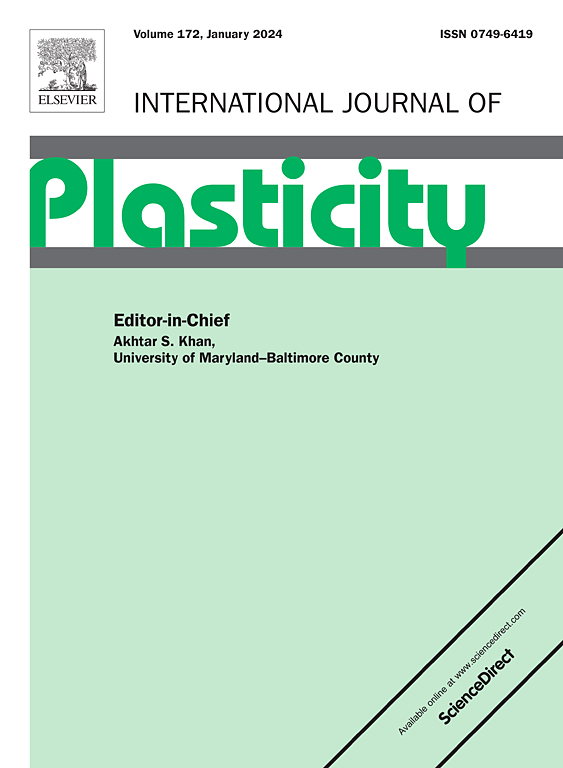Mechanistic insights into twinning and detwinning during fatigue short crack growth in zirconium alloys
IF 9.4
1区 材料科学
Q1 ENGINEERING, MECHANICAL
引用次数: 0
Abstract
This study investigates fatigue short crack growth in Zircaloy-4 alloy, revealing phenomena of twinning and detwinning of {}<> tensile type at the vicinity of the crack. Twinning primarily occurs at the crack tip, crack deflection sites, and adjacent heterogeneities such as grain boundaries and triple junctions. Both twinning and slip contribute simultaneously to crack tip plasticity. The occurrence of twinning significantly increases the average stress and stored energy density at the crack tip, thereby accelerating short crack propagation. Twinning forms earlier in Z-type samples (with the texture pole aligned with the Z-direction) compared to Y-type samples, resulting in an earlier and more pronounced increase in crack growth rate. Detwinning is observed exclusively in Z-type samples, induced by substantial changes in stress distribution at the crack tip, likely due to dislocation pile-up at the twin boundary during crack growth.
锆合金疲劳短裂纹扩展过程中孪晶和去孪晶的机理研究
本文研究了锆合金的疲劳短裂纹扩展,揭示了{101¯2}<;101¯1>;裂纹附近的拉伸型。孪晶主要发生在裂纹尖端、裂纹偏转部位和相邻的异质处,如晶界和三联结。孪晶和滑移同时影响裂纹尖端的塑性。孪晶的出现显著提高了裂纹尖端的平均应力和存储能量密度,从而加速了短裂纹的扩展。与y型样品相比,z型样品(织构极与z方向一致)的孪晶形成得更早,导致裂纹扩展速率的增加更早,也更明显。只在z型试样中观察到去孪晶,这是由裂纹尖端应力分布的实质性变化引起的,可能是由于裂纹扩展过程中孪晶边界处的位错堆积。
本文章由计算机程序翻译,如有差异,请以英文原文为准。
求助全文
约1分钟内获得全文
求助全文
来源期刊

International Journal of Plasticity
工程技术-材料科学:综合
CiteScore
15.30
自引率
26.50%
发文量
256
审稿时长
46 days
期刊介绍:
International Journal of Plasticity aims to present original research encompassing all facets of plastic deformation, damage, and fracture behavior in both isotropic and anisotropic solids. This includes exploring the thermodynamics of plasticity and fracture, continuum theory, and macroscopic as well as microscopic phenomena.
Topics of interest span the plastic behavior of single crystals and polycrystalline metals, ceramics, rocks, soils, composites, nanocrystalline and microelectronics materials, shape memory alloys, ferroelectric ceramics, thin films, and polymers. Additionally, the journal covers plasticity aspects of failure and fracture mechanics. Contributions involving significant experimental, numerical, or theoretical advancements that enhance the understanding of the plastic behavior of solids are particularly valued. Papers addressing the modeling of finite nonlinear elastic deformation, bearing similarities to the modeling of plastic deformation, are also welcomed.
 求助内容:
求助内容: 应助结果提醒方式:
应助结果提醒方式:


